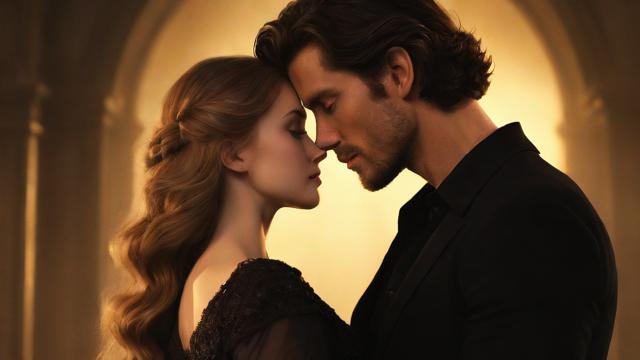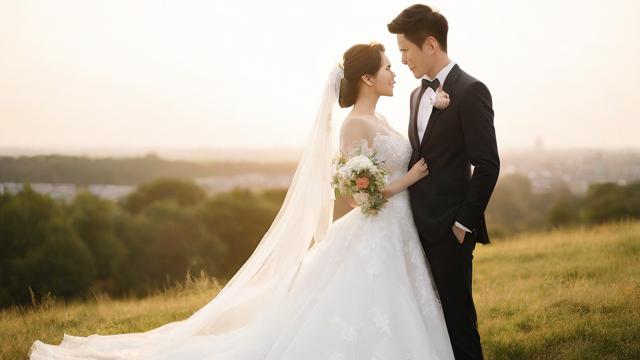The Evolution and Influence of Dandyism in Fashion History and Modern Style
When we talk about the term "dandy," it's not just a word but a concept that has shaped fashion history. A dandy is more than someone who dresses well; it’s about an attitude, a lifestyle, and even a rebellion against societal norms. In this chapter, I’ll explore what it means to be a dandy in today's world and where the term originally came from.
Origins of the Term "Dandy"
The word "dandy" has been around for centuries, with roots stretching back to the late 18th century. It all started in England, where people began using the term to describe men who were exceptionally particular about their appearance. Back then, being a dandy wasn’t just about wearing fancy clothes—it was about standing out in a crowd through style and confidence. Think of it as a way to express individuality at a time when most people followed strict dress codes set by society. For me, learning about the origins of the term makes me appreciate how far-reaching its influence has become over time.
To give you a clearer picture, imagine walking down the streets of London in the early 1800s. You’d see gentlemen dressed in tailored suits, polished boots, and colorful accessories. These men weren’t just following trends—they were creating them. The term "dandy" became synonymous with elegance, sophistication, and an almost defiant approach to dressing. This mindset laid the foundation for what we now call dandyism.
Characteristics of a Dandy in Modern Context
Fast forward to today, and the idea of a dandy still resonates strongly in fashion. In modern terms, a dandy is someone who prioritizes personal style above everything else. They don’t follow mainstream trends blindly but instead create their own rules. If you look closely, you might notice a dandy opting for unique patterns, unexpected colors, or vintage pieces that tell a story.
For example, let’s say you meet someone at a party who’s wearing a three-piece suit paired with a bow tie and pocket square. At first glance, they seem traditional, but upon closer inspection, you realize the fabric is a bold paisley print, or the shoes are handcrafted leather brogues. That person embodies the spirit of a dandy because they’ve taken something classic and made it entirely their own. To me, this shows how versatile and timeless the concept of dandyism truly is.
In this chapter, we're diving into the fascinating history of dandyism. It’s not just about clothing but a journey through time that shows how this movement evolved from its origins in the 18th century to today's modern interpretations. Let me take you on a trip through the centuries and show you how dandyism has always been about breaking boundaries and creating new styles.
The Birth of Dandyism in the 18th Century
Let’s start at the very beginning. In the late 1700s, England was a place where social class dictated almost everything, including what you wore. Most people followed strict rules about their outfits, but then came the dandies. These guys decided they didn’t want to blend in—they wanted to stand out. They started wearing clothes that were more refined, more tailored, and had a sense of uniqueness. For me, imagining these early dandies walking through the streets of London is like seeing the first sparks of rebellion against boring fashion norms.
The key figure here was Beau Brummell, who we’ll talk about later, but his influence began right here in the 18th century. He showed everyone that it wasn’t about flashy jewelry or over-the-top costumes; it was about simplicity combined with elegance. Tailored coats, crisp shirts, and polished boots became the signature look of the dandy. This era set the tone for everything that followed, proving that even back then, personal style could make a statement.
Now think about it—this was a time when most men dressed in similar ways based on their social status. But the dandies? They turned that idea upside down. By focusing on quality fabrics, perfect fits, and attention to detail, they created a new kind of gentlemanly style. To me, this period represents the birth of individuality in men’s fashion.
Evolution of Dandyism Through the 19th and 20th Centuries
Fast forward to the 19th century, and dandyism continued to evolve. As society changed, so did the way people expressed themselves through fashion. During this time, industrialization brought new materials and techniques, which allowed dandies to experiment even further. You might have seen them wearing velvet jackets, silk cravats, and brocade waistcoats. Each piece told a story about the wearer’s personality and interests.
By the 20th century, dandyism took on different forms depending on the cultural climate. In the roaring 1920s, flappers weren’t the only ones having fun—men embraced bold patterns, wide lapels, and colorful accessories. Then came the post-war years, where sleeker silhouettes and minimalist aesthetics dominated. Yet, the spirit of dandyism remained strong. People still sought ways to express themselves uniquely within the confines of societal expectations.
For instance, think about musicians like David Bowie or Bryan Ferry in the 1970s. Their looks were inspired by classic dandy elements but updated for the times. They combined tailoring with avant-garde touches, showing that dandyism isn’t stuck in one era—it adapts and grows. That’s what makes it so powerful—it’s timeless yet ever-changing.
When I reflect on this evolution, I see how each generation adds its own twist to dandyism. Whether it’s through music, art, or simply everyday dressing, the core idea stays the same: be yourself, and let your style speak for you.
In this chapter, we explore how dandyism has influenced various aspects of culture, from men's fashion to art and literature. It’s not just about the clothes but also about the mindset that comes with them. Let me show you how dandyism shaped the way people think about style and self-expression.
Influence on Men's Fashion
When it comes to men's fashion, dandyism left an indelible mark. Picture this: in a world where men were expected to dress simply and practically, dandies introduced the idea that clothing could be both functional and artistic. For me, this shift is like watching a black-and-white movie suddenly burst into color. Suddenly, men started paying attention to details like fabric quality, fit, and accessories.
Dandyism taught us that a well-tailored suit isn’t just about looking good—it’s about feeling confident and making a statement. Imagine walking into a room wearing something that says, "I care about how I present myself." That’s what dandies did back in the day, and their influence continues today. Modern designers often look back at dandy styles for inspiration, blending historical elegance with contemporary trends.
Take a moment to consider how far-reaching this impact is. Today’s high-end menswear owes a lot to the principles established by dandies centuries ago. From slim-cut suits to patterned ties, many elements we take for granted trace their roots to this movement. It’s fascinating to see how one group of individuals managed to redefine an entire industry.
Role in Art, Literature, and Society
Beyond fashion, dandyism played a significant role in shaping art and literature. Think about writers like Oscar Wilde or artists like James McNeill Whistler. These creative minds embodied the dandy spirit—refined, witty, and unapologetically themselves. To me, they represent the intersection of aesthetics and intellect, proving that style isn’t superficial; it’s deeply connected to who we are as individuals.
In literature, dandies often appeared as characters who challenged societal norms. They questioned why things had to be done a certain way and offered alternative perspectives. This questioning attitude encouraged readers to think critically about their own lives and choices. Similarly, in art, dandies became symbols of sophistication and rebellion rolled into one.
On a broader societal level, dandyism promoted the idea that personal expression matters. In a time when conformity was king, dandies dared to stand out. They showed that being different wasn’t something to fear—it could be celebrated. This message resonates even now, reminding us that our unique qualities are what make us interesting and valuable.
As I reflect on all of this, I realize that dandyism isn’t just about appearances. It’s about embracing individuality, pushing boundaries, and inspiring others to do the same. Whether through fashion, art, or society, its cultural impact remains strong and continues to evolve.
In this chapter, we dive into the lives of some truly remarkable individuals who have embodied the essence of dandyism. From the original dandy to modern influencers, these figures show us how personal style can transcend fashion and become a form of self-expression. Let me introduce you to two key players: Beau Brummell, the man who started it all, and today’s contemporary icons who keep his legacy alive.
Beau Brummell: The Original Dandy
Let’s start with the man who laid the foundation for what we now know as dandyism—Beau Brummell. To me, he wasn’t just someone who dressed well; he was a revolutionary thinker when it came to men’s fashion. In the late 18th century, most men wore flashy outfits filled with bright colors and intricate designs. But Brummell? He stripped things down to simplicity and elegance. Imagine walking into a room wearing a perfectly tailored navy blue suit paired with a crisp white shirt and an artfully tied cravat. That’s exactly what Brummell did, and it changed everything.
What made him so special wasn’t just his wardrobe—it was his attitude. He believed that dressing should be about quality over quantity, subtlety over extravagance, and individuality over conformity. People admired him not only because he looked sharp but also because he carried himself with confidence and wit. For me, Brummell represents the idea that your clothes aren’t just something you wear—they’re part of who you are. His influence is still felt today, from classic tailoring techniques to the timeless appeal of understated luxury.
Now picture yourself living in a world where everyone followed strict rules about how they should dress. Then along comes this guy who says, "No, I’m going to do things my way." That kind of courage inspires people even now. Whether you’re a fan of vintage styles or modern twists, Brummell’s legacy reminds us that standing out doesn’t mean shouting louder—it means speaking clearly through your choices.
Contemporary Influencers of Dandy Style
Fast forward to today, and we see a new generation carrying on the dandy tradition. These contemporary influencers bring fresh perspectives while honoring the core principles of dandyism. Take Harry Styles, for example. At first glance, he might seem like just another pop star, but look closer and you’ll notice his impeccable sense of style. He often wears bold patterns, unexpected color combinations, and luxurious fabrics—all done with an air of effortless sophistication. It’s almost as if Brummell had reincarnated in the 21st century!
But it’s not just about celebrities. Everyday individuals around the globe are embracing dandyism in their own ways. Some focus on sustainable fashion, choosing high-quality pieces that last longer. Others experiment with accessories, turning a simple outfit into something extraordinary. What ties them all together is the belief that clothing is more than functional—it’s a way to express creativity and personality.
For me, watching how dandyism evolves over time is fascinating. While Brummell set the stage, today’s influencers expand upon his ideas by incorporating global influences and technological advancements. Think about custom-made suits using eco-friendly materials or virtual try-ons that help you find the perfect fit. These innovations prove that dandyism isn’t stuck in the past—it continues to grow and adapt, staying relevant in every era.
In this chapter, we’ll explore how dandyism thrives in today’s fashion world and what the future might hold for this timeless style. The spirit of dandyism continues to inspire both designers and everyday individuals who seek to express themselves through their clothing. Let me share my thoughts on where we stand now and where I think this elegant movement is headed.
Dandyism in Today's Fashion Industry
When I walk into a modern boutique or flip through a fashion magazine, it’s clear that dandyism has found its place in today’s industry. Designers are increasingly drawn to the principles of elegance, individuality, and attention to detail that define dandyism. Brands are creating collections that nod to classic dandy styles while adding contemporary twists—like sleek cuts paired with unexpected colors or textures. For example, you might see a tailored suit jacket made from velvet or a crisp shirt adorned with subtle embroidery. These pieces honor the past while embracing the present.
The influence goes beyond high-end fashion houses too. Streetwear brands have started incorporating elements of dandyism into their designs. Think about sneakers matched with sharp blazers or oversized coats layered over slim-fit trousers. This fusion creates something unique: a look that feels both polished and laid-back. To me, this blend reflects how versatile dandyism truly is—it doesn’t demand perfection; instead, it encourages personal expression within a framework of quality and thoughtfulness.
Another exciting development is the rise of digital platforms showcasing dandy-inspired looks. Social media allows people to connect and share ideas globally. Someone in Tokyo could discover a dandy outfit posted by someone in Paris and instantly feel inspired. It’s amazing how technology helps keep the tradition alive while expanding its reach. Through these interactions, dandyism becomes less about rigid rules and more about celebrating individual flair.
Predictions for the Future of Dandy Style
Looking ahead, I believe dandyism will continue evolving as society changes. One major trend I foresee is greater emphasis on sustainability. As environmental concerns grow, many dandies will likely prioritize eco-friendly materials and ethical production methods. Imagine owning a bespoke suit crafted from recycled fibers or shoes made using innovative plant-based leathers. These choices align perfectly with the dandy ethos of valuing quality and craftsmanship.
Technology will also play a significant role in shaping the future of dandyism. Virtual reality and augmented reality tools may revolutionize how we shop for clothes. Picture trying on different outfits without leaving your home or getting instant feedback on how certain styles enhance your features. Such advancements could make it easier than ever to achieve that signature dandy look without compromising comfort or convenience.
Finally, I expect dandyism to become even more inclusive. Traditionally associated with men’s fashion, it’s already starting to transcend gender boundaries. Women and non-binary individuals are adopting dandy aesthetics and redefining what it means to embrace elegance and self-assuredness. This inclusivity enriches the movement, ensuring it remains relevant and inspiring for generations to come.
To sum up, dandyism isn’t fading away—it’s adapting and growing stronger. By staying true to its core values while welcoming new influences, it secures its spot in the ever-changing landscape of fashion.














